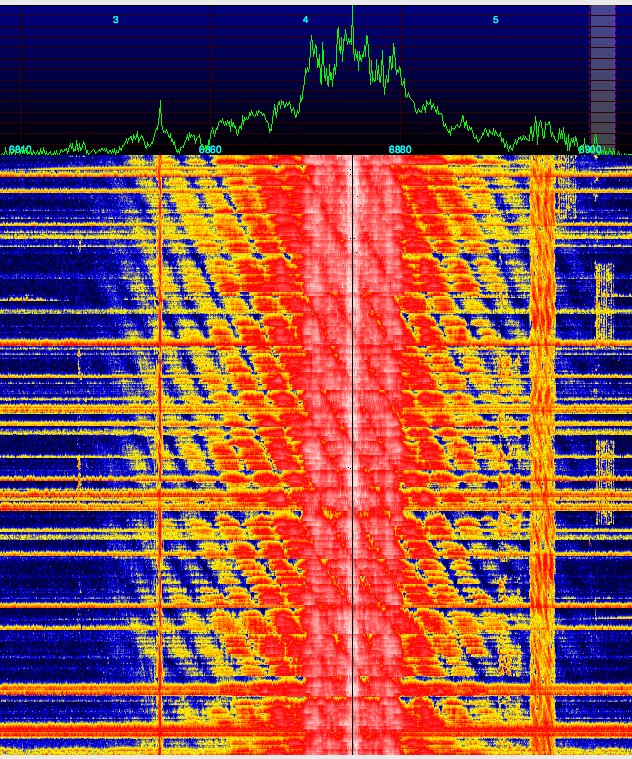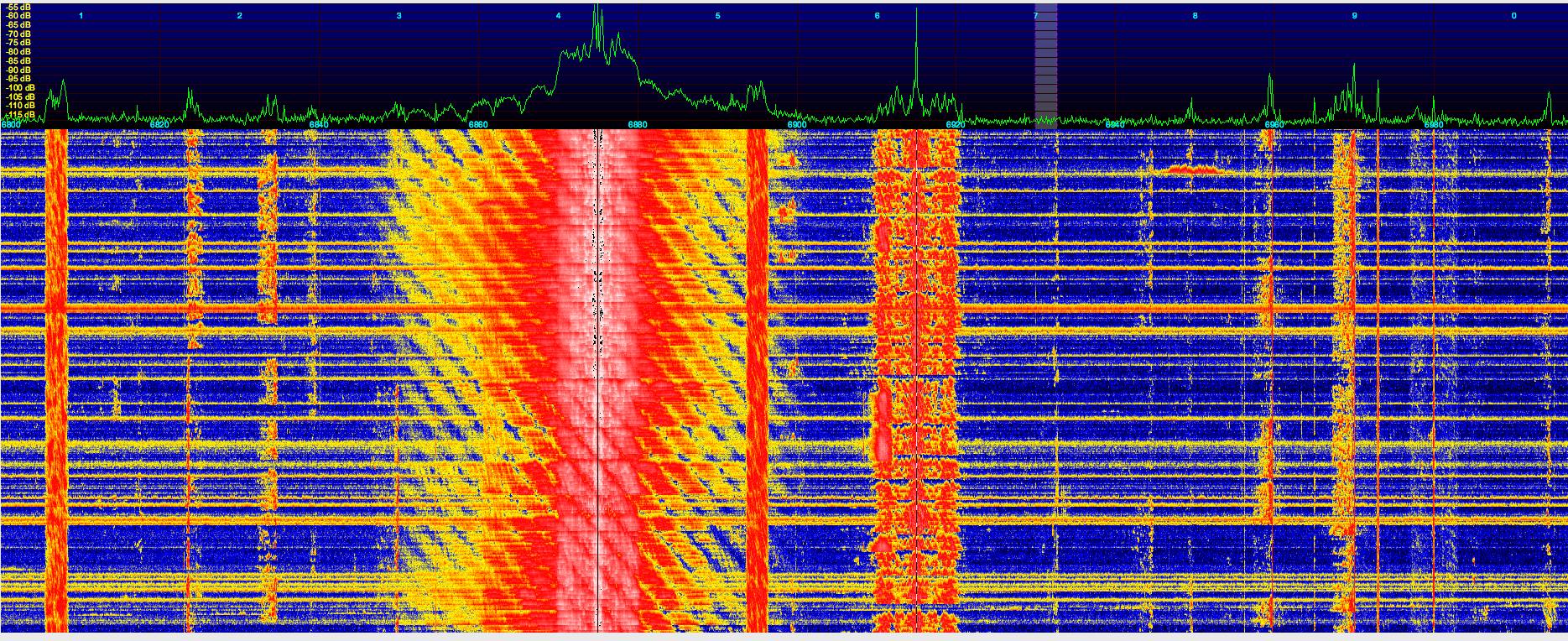Here’s a waterfall I just made at 2155 UTC today, March 28, 2012, of WWCR Nashville TV on 6875 kHz, as captured by my netSDR running SdrDx software:
The sidebands extend all the way out to 6850 and 6900 kHz. That’s +/- 25 kHz wide. I inserted up to 30 dB of attenuation on the input signal, and the wide sidebands didn’t go away, so I don’t think this is an overloading issue.
Does the FCC have limits on the channel width SWBC stations can occupy? Is this really necessary?
Update:
Here’s a waterfall from 2327 UTC, showing both WWCR on 6875 and WYFR on 6915. Both are of similar signal strength, but only WWCR shows the very wide signal. Double click on the image to open it full size:
Over modulation?
FWIW, you can see that with both of these stations on, there isn’t a lot of space left for pirates on 43 meters. At 6925, you run into possible interference from WYFR on 6915. WWCR takes out at least 50 kHz, from 6850 to 6900. There’s several UTEs scattered around as well.



Make sure the noiseblanker is off… the noiseblanker works in the RF domain, and so it pulls information out of the spectrum that is used to *determine* the spectrum… that can lead to ghost display information with strong signals that trigger the nosieblanker.
Yep, it was off, I just checked. I typically run with it off, in fact.
As a test, I also tried my another receiver, my JRC NRD 545, and could hear the splatter all around the 6850-6900 kHz range.
What a mess, eh? We’ve got AM stations running 20 kHz wide here, too — solidly right over the next two channels. Really annoying.
Do try the NB on SSB; that’s what it was designed to deal with. 🙂